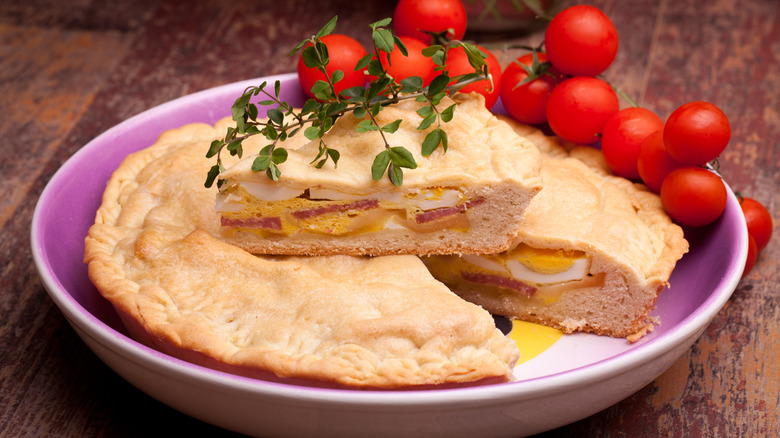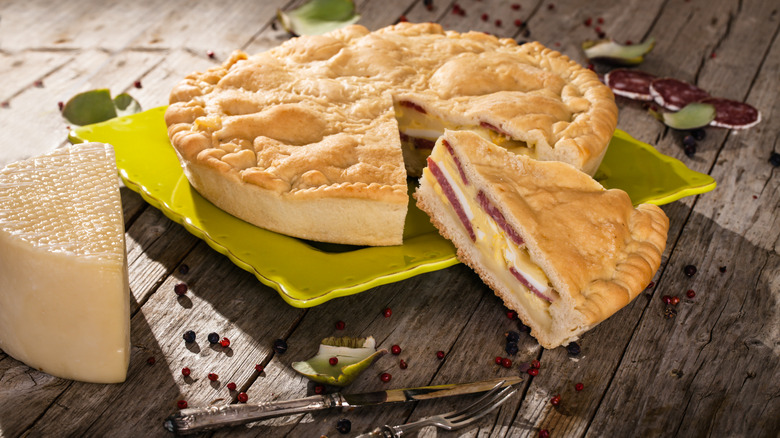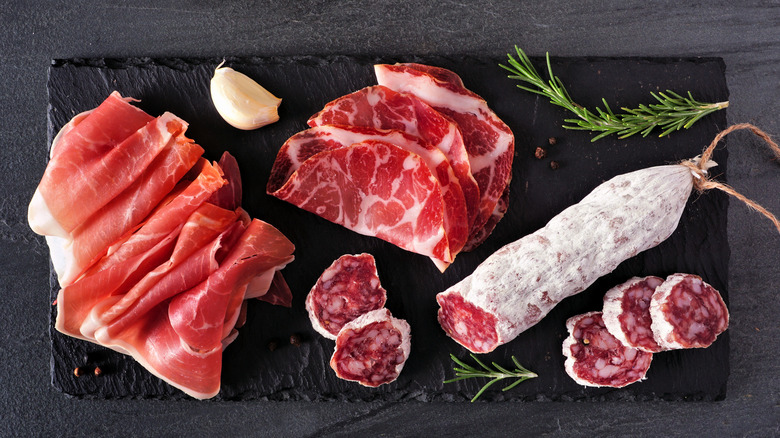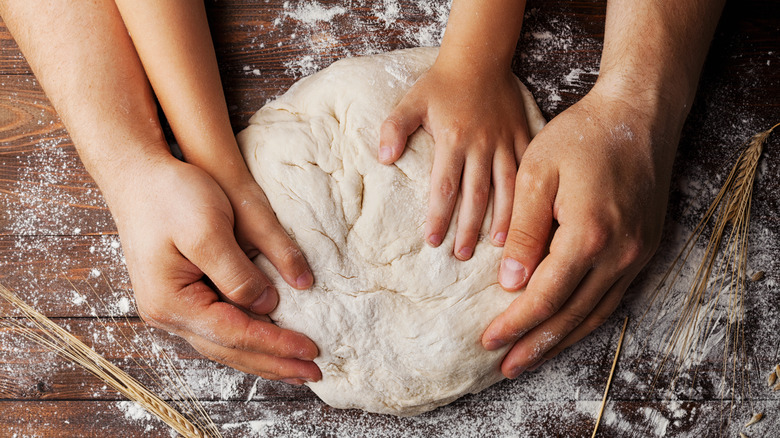Italy's Easter Pizza Isn't Your Average Pie
Around the world, Easter traditions abound. While there are some cross-culture commonalities — eggs, ham, and lamb are staples — countries have their own unique traditions too. In England, families eat hot cross buns while in Greece, traditional Easter soup combines lamb with vegetables.
For many Italians and Italian-Americans, Easter pizza is an essential part of the holiday festivities. Thick, rich, and typically covered with a top crust, Easter pizza looks nothing like the pizzas most Americans are used to. It's closer to a quiche — but instead of vegetables and tomato sauce, the pie consists of egg, cheese, and cured meats.
Like many Italian delicacies, Easter pizza goes by many different names. It's often called "pizza rustica," but based on the region, you might hear it called "pizza di pasua," "pizza chiena," "pizza gain," or "pizza ripiena." But no matter what it's called, the dish evokes tradition, community, and celebration — a joyous end to the Lent fast and a celebration of rebirth.
Where did Easter pizza originate?
Easter pizza comes from the region surrounding Naples, where it originated in the 17th century. It's a perfect example of the decadent meals often served to celebrate Easter — and the end of Lent. The pizza combines meat, dairy, and eggs, three things Catholics traditionally gave up during the 40-day fast.
Easter pizza isn't the only savory Italian pie traditionally associated with the holiday, though. There's pastiera, a dessert that, like Easter pizza, is made from soft cheese and eggs. Torta pasqualina, a savory dish from northwest Italy, is made from spinach and egg baked in a puff pastry crust. It's traditionally made with 33 sheets of puff pastry, which represent Jesus' age at the time of his death.
In later years, Italian-American immigrants brought it to the U.S. While it never broke into the American mainstream like the famous flat pies topped with tomato sauce, Easter pizza made its mark on Italian-American culture. Italian families and professional bakers alike have kept the tradition alive, like Cake Boss star and fourth-generation Italian baker Buddy Valastro who serves it at his Hoboken shop, Carlo's Bakery.
What are the ingredients in Easter pizza?
A traditional Easter pizza is made from soft, fresh cheese like ricotta or basket cheese, cured meats, and occasionally spinach or other vegetables. Popular meats include prosciutto, soppressata, capocollo, and Italian sausage. Most recipes call for multiple types of meat, so feel free to mix and match with the offerings at your local grocery store or butcher.
The crust is a simple dough made with flour, eggs, and some kind of fat. Traditionally, the dough was generally made with lard. Some recipes call for olive oil, and modern variations often use butter.
If you decide to make an Easter pizza, remember that there's always room for creativity and innovation. Italian Easter pizzas vary from region to region and even family to family, so don't stress too much about being "authentic." After all, even the Italian-American immigrant families who brought Easter pizza to the U.S. adapted their recipes, swapping cured meats from the old country for American deli fare.
How is Italian Easter pizza made?
Just like with the ingredients, the exact method for preparing Easter pizza also tends to vary. Some are round, others are formed in rectangular pans. Sometimes, the cheese and meat are layered like a lasagna. Most recipes are a little more haphazard, though.
To make a simple and straightforward Easter pizza, combine the ingredients for the crust to form a loose, crumbly dough. Divide the dough into two pieces, then roll it out. Use one piece to line your baking dish.
Beat the eggs until thoroughly combined, then add the cheese and pieces of diced meat along with any other ingredients you plan to use, like salt, pepper, or spinach. Pour the mixture into your dish, then layer the second piece of crust on top.
Bake the pizza, and then let it cool completely. While you can eat it hot out of the oven, Italian families traditionally eat Easter pizza at room temperature.



